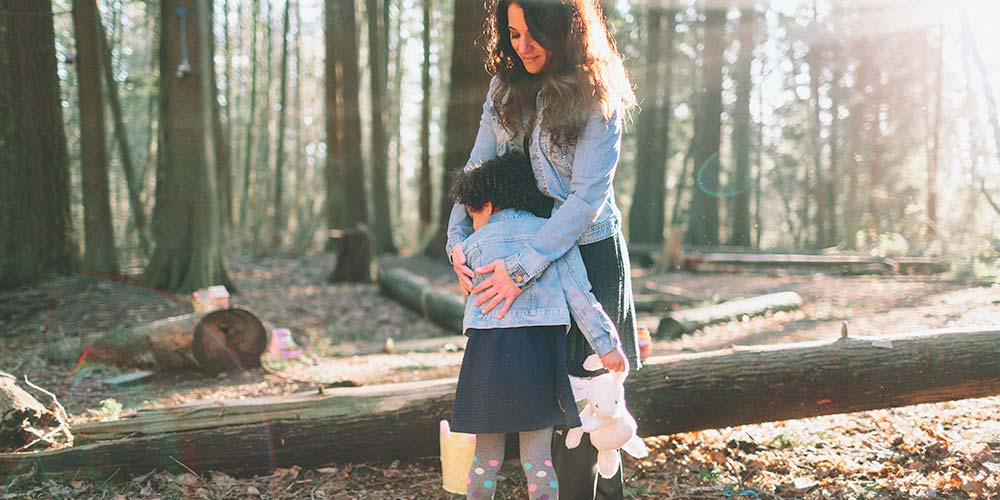I stopped to pick up a sock that had fallen out of the laundry basket, and my son, who tailed a little too close, practically ran into me. “Where’s your brother?” I asked. He responded, “I dunno. Off somewhere reading?” And this is how things have been since the beginning. My older one is always underfoot and my younger is usually sitting somewhere quietly thumbing through a Wimpy Kid book or playing on his own.
Sometimes I worry that because I didn’t make my older son play alone more often as a toddler, he’s not as comfortable or capable of being alone now. Independent play in kids is not only healthy, it’s critical. So here are 7 ideas for how to get a toddler to play independently, even when he always wants you by his side.
1. Have a designated time each day.
When my sons were itty bitty, I worked a job where I had to be at the office at 5:30 a.m. It was brutal, but it meant I was home by two. When they got up from their naps, we’d spend some time playing and snacking, and then I’d try to get them to play independently so I could get some things done around the house.
Like I said, it was a struggle with my older son. Some days, his naptime was off and other days, he was clingy, but having designated time meant I wasn’t surprising him or making him play alone as a knee-jerk reaction.
2. Start small.
A 2-year-old’s attention span is four to six minutes. For a 4-year-old, it’s eight to 12 minutes, so don’t expect to set your little one down with a pile of blocks while you get an hour of alone time. Start small by giving her a toy she hasn’t seen in a while. With one eye on the clock, track how long she’s able to play on her own. The next day, give her a different toy and see how long she goes. You’ll love watching your child’s length of focused time grow.
3. Rethink her toy options.
Have you ever scrolled through Netflix options for 20 minutes and ended up settling on an old favorite anyway? More isn’t better for the brain, and that applies to how to get a toddler to play independently. Limit distractions by putting out fewer toys, and try to go simple. Paper towel rolls and a ball will usually keep a child’s attention longer than a toy with bells and whistles.
4. Move him into your space if he needs to be closer.
It’s not necessary to disappear from your child’s sight. Don’t stress that it’s not truly independent play just because your child can glance over and see you. If he’s playing on his own, he’s reaping the benefits: creativity, persistence, patience, and problem-solving skills.
5. Change your attitude.
Independent play isn’t a punishment, so avoid framing it that way with your tone of voice or choice of words. Try saying something like “I’m going to set the timer for 10 minutes so you can have your playtime. I’ll be at the kitchen counter making lunch and you can tell me all about it when you’re done.”
6. Don’t interrupt and don’t relieve boredom.
It’s hard to not peek in and ask how it’s going when you overhear your daughter striking up an intriguing conversation with her imaginary friend. But interrupting, even to praise, takes her focus off what she’s doing. And if she’s bored or whining that she doesn’t want to play alone, give her a couple of minutes to sort it out herself. If you do step in to offer relief, do it in the form of encouragement: “The silly voices you do are the best. I wonder which of your stuffed animals want to talk to each other.”
7. Remember it’s good for you, too.
Keep your eyes on the prize. Independent play in toddlers and little kids is good for their brains, but it’s also a brief respite for yours. No, it’s not a lunch out with girlfriends, but a few minutes every day when your hands are free and your attention is on adult things will give you that little boost you need to dive back into being an active participant in your little one’s exciting life.
How are you at encouraging independent play in your toddler? What’s the biggest struggle?










